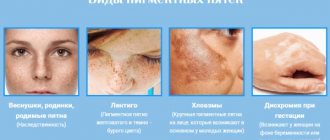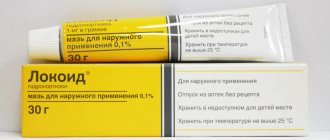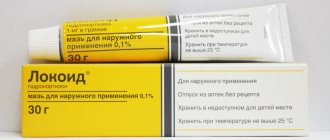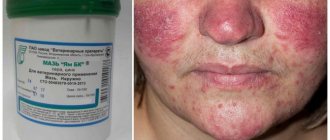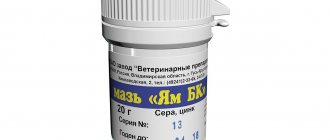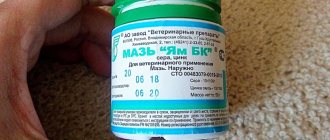Scientifically, “bumps” from injections are called post-injection infiltrates of the buttocks. “They are lumps that appear some time after an intramuscular injection,” says the head of the outpatient surgery department at one of the medical clinics in Moscow. “They are a pathological response of the body to the administration of a drug, regardless of its type.”
There are several types of “bumps” on the buttocks after an injection. “The first option is an infiltrate, that is, a local reaction, which is characterized by a tissue response at the injection site - edema,” explains the surgeon, graduate student of the Faculty of Internal Medicine, Department of Surgery, Department of Surgical Endocrinology, State Budgetary Healthcare Institution MONIKI named after. M. F. Vladimirsky. — The second option is a hematoma. It appears from hemorrhage of a damaged vessel after injection; unfortunately, it is impossible to predict this in advance.”
The third option (and the most dangerous) is an abscess. “Abscesses are very painful formations with purulent contents and a vivid clinical picture; they can only be treated surgically,” adds the doctor.
In fact, “bumps” are a local reaction of the body to a puncture and intramuscular injection of the drug. If left untreated, the infiltrates can become abscesses, which pose a serious health threat. “In most cases, in relatively healthy people they go away within a week, but there are exceptions,” the doctor notes.
pharmachologic effect
Due to the combined composition, the drug has antimicrobial, antibacterial and dehydrating properties.
It has therapeutic activity against gram-negative and gram-positive bacteria. The active ingredient, chloramphenicol, does not violate the integrity of cell membranes, easily penetrates deep into tissues, promotes their regeneration and removal of purulent contents. In addition, when using the ointment, there is a decrease in swelling, inflammation and strengthening of the body's defenses at the local level.
special instructions
It is better to avoid simultaneous use with drugs that inhibit hematopoiesis.
After using the product, the reactive susceptibility of the skin may increase, which is why hypersensitive reactions may then appear at the time of using the ointment.
If you need to use the ointment for longer than a month, you will need to take a peripheral blood test.
The drug does not in any way affect the ability to drive a vehicle or operate other dangerous machinery.
There are no cases of negative effects when taken in parallel with other drugs.
If the ointment gets on the mucous membranes, you need to rinse them well with water. If the ointment gets inside, you need to rinse the stomach with activated charcoal.
What is Levomekol used for?
The drug is prescribed for the treatment of the following conditions:
- Skin infections due to pathogenic pathogens.
- Calluses.
- Pimples, boils, blackheads.
- Burn lesions, especially 2nd and 3rd degrees.
- Inflammation of the ear and sinuses with purulent discharge.
- Hemorrhoids.
- Bedsores.
- Postoperative wound care.
- Death of individual sections of tissue.
- Eczema.
Instructions for use
The ointment can be used by adults and children from 3 years of age. The product is applied to the open wound using sterile cotton wool and secured with a bandage. You can inject ointment into a purulent wound using a syringe.
The dressing must be done every day until the pus is completely removed from the wound.
If the affected surface is large enough, then the permissible dose per day should not be more than 3 g.
The ointment should be used within 4 days from the moment of infection. In severe conditions, the course of treatment can be extended to a week. With prolonged use, osmotic shock may occur in healthy cells.
For sinusitis, ear inflammation and runny nose
If you have a runny nose, soak a cotton pad with ointment and insert it into your nasal passages. If possible, keep for 3-4 hours. For ear inflammation and sinusitis, you need to make a tourniquet out of gauze, soak it in ointment and insert it into the ear for 8-12 hours.
In dentistry
When a tooth is removed and the oral mucosa is damaged, you need to rub the ointment with light circular movements into the problem areas. You can use the ointment no more than 3 times a day.
For hemorrhoids
Before applying the product, you need to rinse the anal area with water at room temperature and dry with a towel. After this, you can apply the ointment.
For burns
Levomekol has proven itself well for burns of varying severity. In severe cases, the ointment is only an aid and cannot replace general treatment. Before applying the ointment, the affected area of the body should be washed and covered with a napkin treated with ointment. The bandage needs to be changed 4 times a day.
For acne
Acne appears as a result of bacterial and infectious infection. Dermatologists recommend applying a thin layer of ointment to small rashes and leaving for 3-4 hours. Afterwards, rinse with water. In this way, acne can be treated for no longer than 12-14 days. In case of isolated rashes, it is better to cover the treated area with a gauze bandage.
How to use Levomekol correctly
Levomikol in the form of leniment is used topically for adults and children over 3 years of age. Depending on the indication, there are some differences in use.
In addition to applying the ointment to the affected areas, it can be administered through a syringe to wash out purulent cavities. To do this, the medicine is heated to 36 C.
When treating various infectious skin diseases, it is worth adhering to the therapeutic dose. The amount of ointment per day should not exceed 3 g. The course duration is 4 days. It is prohibited to use the product for longer to avoid an osmotic state in the affected cells.
Indications for use
The ointment copes well with inflammatory processes and draws out pus. The main indication for use is the formation of purulent wounds.
The product treats wounds and boils. Also used for severe forms of hemorrhoids, herpes, purulent skin rashes. Can be used as local therapy for inflamed lymph nodes.
The patient is prescribed anti-allergy medications, vitamins, and calcium gluconate. In advanced cases, an operation is performed to open the pustules and carry out antibacterial treatment.
Some doctors prescribe ointment for a runny nose and sinusitis, when the problems are caused by a microbial infection.
The ointment showed excellent results in the treatment of purulent formations in the oral cavity. Levomekol will help fight stomatitis, periodontal disease, and inflammatory reactions. Also used as a pain reliever when removing or inserting teeth.
How to treat hemorrhoids with Levomekol
Thanks to the use of Levomikol for hemorrhoids, significant success can be achieved. Since the medicine has an antimicrobial and antibacterial effect, it effectively fights infectious agents.
There is also a decrease in pain, inflammation, swelling and itching. Leniment promotes drying of tissues and stimulates their regeneration.
Treatment of hemorrhoids is carried out in the following order:
- The anus is washed with water at room temperature.
- Dry with a towel.
- Apply the ointment to the area of the nodes before going to bed.
- The anal area is covered with a clean cloth.
- The duration of the course of therapy is no more than 10 days.
Why do bumps appear from injections on the buttocks?
Several factors can lead to the formation of swelling after injections.
- Injection technique.
Have you heard that after injections, nurses with a “light” hand do not get “bumps”? There is a deal of truth in it. “Incorrect intramuscular injection site, administering the drug too quickly, or getting the needle into a nerve or vessel can cause injection bumps,” says the specialist. “Also, compactions can appear as a reaction to the simultaneous administration of a large volume of the drug, frequent injections into the same place,” adds Bulat Yunusov, surgeon at GMS Clinic. - Allergic reaction.
“It can develop due to an overreaction of the immune response to the drug,” the doctor adds. Or - a mixture of drugs. - “Many patients, when injecting themselves, commit the sin of mixing several different drugs in one syringe, which is strictly prohibited. This can cause irreversible complications and serious allergic reactions,” says the doctor.
- Consistency of the drug.
“Oil solutions most often cause swelling and swelling,” says Bulat Yunusov. — These are the drugs that can only be administered intramuscularly. Such injections are characterized by a longer resorption time, and, consequently, an increased risk of complications.” - Incorrectly selected needle.
“A needle that is too long or too short leads to the fact that the medicine enters either very deep muscle layers or into the subcutaneous fatty tissue, that is, it does not reach the muscle layer,” the doctor notes. - Excessive muscle tension during injection.
Intramuscular injections must be performed with a relaxed muscle and preferably in a prone position. - Patient's body weight.
“Build and weight are also factors that need to be taken into account when administering injections,” adds Bulat Yunusov. — Obese patients have a lot of subcutaneous fat. If a drug gets into it, it will inevitably lead to the formation of inflammatory changes (infiltrates, abscesses).”
To prevent injection bumps from appearing, experts advise doing injections following certain rules. “It is important to use needles of the appropriate length and diameter; the choice depends on the patient’s age, injection site, volume of fluid, amount of muscle and fat tissue and solution viscosity,” says Bulat Yunusov. — It is necessary to strictly observe the rules of asepsis and antiseptics. It is preferable to perform injections while lying on a couch or bed.”
Is it possible to use Levomekol on a wound?
The ointment is widely used for the regeneration of clean wound surfaces and purulent discharge. It helps eliminate pathogens, helps reduce inflammation, swelling and prevents further skin infections.
Leniment is preferably applied at night. If the wound is clean, it is treated with an antiseptic solution and a thin layer of ointment. A bandage is applied on top. When the wound surface suppurates, turundas with an antiseptic are placed into its cavity to absorb pus and secretions. Afterwards, Levomikol is placed and fixed with a napkin soaked in the medicine.
Indications for use and contraindications
Levomekol ointment is widely used for medical purposes in the treatment and preventive measures of skin lesions. In what cases should you use Levomekl? It is prescribed for disinfection, cleaning, healing and relieving inflammation and swelling of wounds and other damage to the skin.
For preventive purposes, levomekol ointment is used for first-degree bedsores, calluses, sutures, burns and minor wounds. This is done to avoid suppuration and the formation of more serious damage.
Due to its composition, the ointment is safe for use during illness, pregnancy and breastfeeding, as well as for children. Levomekol ointment is contraindicated in case of intolerance to the components of the drug or allergic reactions.
How to use Levomekol for burns
Due to the unique composition of leniment, it has pronounced antimicrobial and antibacterial properties. Increases local immunity, which is especially important for burns. In addition, it suppresses the effect of viruses, stimulates the restoration of tissue cells, relieves inflammation and prevents the necrotic process.
To treat burns, the damaged area is washed with an antiseptic solution and covered with a napkin containing Levomikol. The dressing is changed up to 5 times a day.
The drug is used for varying degrees of burns. The duration of the course of treatment is determined by the doctor.
Where is levomekol ointment used?
Due to its antimicrobial effect, levomekol ointment is used for purulent and fungal diseases. It is prescribed for Pseudomonas aeruginosa, Escherichia coli and staphylococcus.
Use is recommended for wounds of varying degrees. The ointment penetrates deep into the tissue and provokes the production of new cells. The disinfecting effect helps remove excess fluid from damage and relieve swelling.
The use of levomecolic ointment has an immunostimulating effect. Thus, when wounds heal with the help of this remedy, local immunity increases. The ointment helps relieve inflammation and reduce pain.
The drug is available only in the form of an ointment, so it can only be used externally.
Levomekol for pregnant women and children
The product can be used by pregnant and lactating women. Levomekol is absolutely safe, as it is not absorbed into the blood and is not transferred by fluids to the fetus.
Proton therapy as a cancer treatment methodTreatment of caries with modern methods
- Duodenal sounding
Use for children is also permitted. If necessary, it is prescribed to newborn babies. However, before use you should consult your doctor.
Contraindications to the use of ointment are not extensive. Allergic reactions to certain components of the drug may be caused. Allergies can manifest as rashes, itching, or hives.
